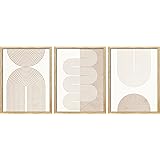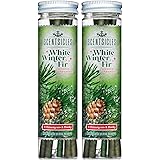Transforming your outdoor space into a beautiful, functional extension of your home is entirely achievable, regardless of its size or your budget. As explored in the video above, embarking on a garden design project can feel like tending to a blank canvas – full of potential. Crafting a modern garden design is about more than just planting flowers; it’s about creating an atmosphere that reflects your personal style and enhances your daily life, turning your garden into a private oasis. This guide expands on the video’s insights, offering practical, beginner-friendly tips to help you cultivate a contemporary home landscape that truly shines.
Laying the Foundation: Understanding Your Space
Before you even think about plant types or patio materials, the first crucial step in modern garden design is to truly understand your existing space. Think of your garden as a living entity with its own unique characteristics. Ignoring these vital details is like trying to fit a square peg in a round hole – frustrating and often unsuccessful.
-
Assess Your Environment
Observe your garden throughout the day and across seasons. How much direct sunlight does each area receive? Some spots might be sun-drenched for hours, perfect for sun-loving plants, while others remain perpetually shaded, ideal for ferns or hostas. Consider also the soil type; is it sandy, clay-heavy, or somewhere in between? A simple soil test kit can reveal its pH and nutrient levels, guiding your plant choices. Lastly, take stock of any existing plants, trees, or structural elements. Can they be incorporated into your new design, or do they need to be removed?
For example, if your front yard is a sun trap, imagine a vibrant display of sunflowers (like a warm, welcoming smile) and marigolds greeting visitors. Conversely, a shady corner could become a serene retreat with lush hostas and delicate ferns, reminiscent of a cool, quiet forest nook.
-
Define Your Needs and Desires
What do you envision for your garden? Is it a lively entertainment area, a tranquil reading spot, a productive vegetable patch, or a play zone for children? Your lifestyle dictates the functional zones you’ll need. If you dream of alfresco dining, a patio is essential. For peaceful contemplation, a secluded bench amidst calming greenery might be perfect. Balancing aesthetics with practicality ensures your garden is not just beautiful, but also truly useful.
Crafting Cohesion: Selecting Your Modern Garden Theme
A well-chosen theme acts as the blueprint for your entire modern garden design, ensuring every element works in harmony. It’s the central idea that ties together your plants, hardscaping, and decorative features, preventing your outdoor space from looking haphazard. While the video mentions several popular themes, let’s dive deeper into how to achieve a distinctly modern aesthetic.
-
Embracing Modern Minimalism
A modern minimalistic garden is characterized by clean lines, geometric shapes, and a restrained color palette. This style often emphasizes structure and form over an abundance of blooms. Think of it as a carefully curated art gallery where each piece stands out for its unique beauty, rather than a dense, overgrown forest. Materials like concrete, steel, and smooth stone are frequently used, contributing to a sleek and sophisticated look. The focus is on simplicity, order, and a sense of calm.
To achieve this, consider pathways made of large, evenly spaced pavers, or raised beds with sharp, defined edges. A limited color palette, perhaps shades of green with pops of white or deep purple, will reinforce the minimalist vibe. Less is often more in this design philosophy, allowing space and light to become integral design elements.
-
Other Influential Themes
While modern minimalistic is a strong choice for a contemporary home, other themes can also be adapted. A “rustic” garden, for instance, can be given a modern twist by incorporating salvaged wood with clean, geometric cuts rather than rough, uneven pieces. A “tropical paradise” can lean modern with architectural palms, sleek water features, and bold, exotic foliage plants in structured planters, rather than a wild, untamed jungle look. The key is to select elements that align with your home’s architecture and your personal taste, allowing your garden to feel like a natural extension of your indoor living space.
Bringing Life: Thoughtful Plant Selection
Plants are the heart and soul of any garden, infusing it with life, color, and texture. In modern garden design, plant selection isn’t just about what looks pretty; it’s about how plants contribute to the overall aesthetic and structural integrity of the space. They are the brushstrokes that bring your canvas to life.
-
Balancing Perennials and Annuals
For year-round interest, a strategic mix of perennials and annuals is essential. Perennials, like lavender or daylilies, are the reliable backbone of your garden, returning each year and providing consistent structure and form. Think of them as the permanent residents, offering a sense of stability. Annuals, such as petunias and zinnias, are the vibrant, temporary guests that provide an exciting burst of seasonal color, allowing you to experiment with different palettes each year. They are perfect for adding those lively pops of color that grab attention.
-
The Power of Foliage
Don’t underestimate the impact of foliage plants. Varieties like hostas, with their broad, textured leaves, or ornamental grasses, which sway gracefully in the breeze, can create incredible depth and visual interest without relying on flowers. Their varied shapes, sizes, and shades of green (or even purple, silver, and gold) add sophisticated layers. These plants are the unsung heroes, providing continuous beauty and defining the garden’s character even when flowers aren’t in bloom. They act as natural sculptures, offering form and presence.
-
Strategic Plant Placement
In a modern garden, plants are often used in mass plantings for a bold statement or as individual specimens to highlight their unique form. Consider grouping plants with similar water and light needs together for easier maintenance. Think about varying heights and textures to create visual appeal, leading the eye through your outdoor space. Tall, slender plants can draw the gaze upwards, while groundcovers provide a lush carpet. The careful arrangement of plants can create a sense of movement and discovery.
Defining Space: Integrating Hardscaping Elements
Hardscaping refers to the non-living elements in your garden – the patios, pathways, retaining walls, and decorative stones. These structural components are crucial in modern garden design, as they define spaces, provide functionality, and contribute significantly to the overall aesthetic. They are the bones of your garden, giving it form and purpose.
-
Pathways and Patios
A simple gravel path can introduce a rustic charm, guiding visitors through your garden. For a more contemporary feel, consider large concrete pavers or sleek natural stone slabs arranged in a geometric pattern. A stone patio can serve as a perfect gathering spot, an outdoor living room where memories are made. When selecting materials, ensure they complement your chosen theme and home architecture. Reclaimed wood for a rustic vibe, or polished concrete for a minimalist touch, can really elevate the space.
-
Raised Garden Beds and Edging
Raised garden beds offer a neat, organized look and make gardening more accessible. They can be constructed from various materials like sleek steel, modern composite, or even concrete blocks, all contributing to a clean, architectural feel. Edging, whether it’s metal, brick, or stone, helps define planting areas and pathways, adding a refined finish. These elements help to create clear boundaries, much like walls define rooms inside a house, contributing to a sense of order and structure.
Adding Personality: Decorative Features and Lighting
Once the foundational elements and plant selections are in place, it’s time to infuse your garden with personality through decorative features and lighting. These are the finishing touches, like jewelry or art, that make your garden truly unique and inviting.
-
Focal Points and Garden Art
A well-placed sculpture, a captivating piece of garden art, or even a distinctive specimen plant can serve as a focal point, drawing the eye and adding intrigue. Water features, such as a small modern fountain or a bird bath, not only attract wildlife but also add a soothing sound, transforming your garden into a sensory experience. These elements act as anchors, giving the eye a place to rest and admire. Choose pieces that resonate with your theme, whether it’s abstract metal art for a modern look or a rustic birdhouse for a cottage garden.
-
Illuminating Your Oasis
Don’t overlook the power of lighting to transform your garden after dusk. String lights draped over a patio create a magical, festive atmosphere, perfect for evening gatherings. Solar-powered lanterns lining a pathway offer a soft glow and enhance safety. Uplighting on trees or architectural elements can highlight their beauty, creating dramatic shadows and depth. Thoughtful lighting extends the usability of your outdoor space, turning it into a delightful retreat for you and your guests long after the sun sets. It’s like painting with light, revealing new dimensions of your garden’s beauty.
Creating a modern garden design is a journey of discovery and creativity. By understanding your space, choosing a cohesive theme, selecting the right plants and hardscaping, and adding personal touches, you can cultivate an outdoor area that truly enhances your contemporary home landscape.











